HOME >> CHINA
Fall of the front
Source:Global Times Published: 2015-9-23 18:28:01
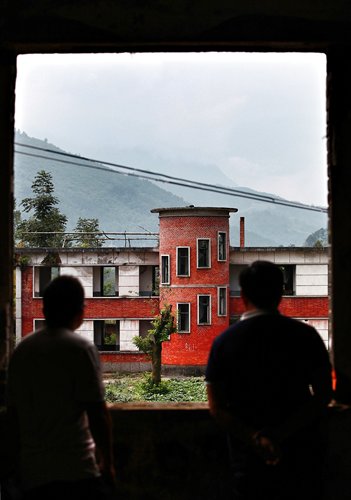
Two former Nanfeng workers stand on the balcony of the old dormitory and look at the factory's hospital. Photo: CFP
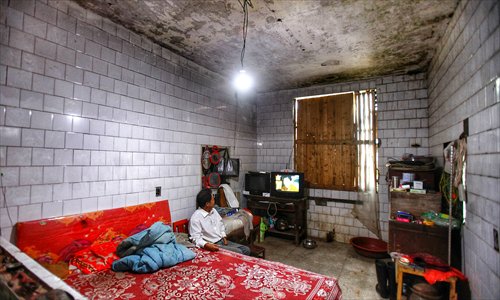
A local farmer family now lives in an old hospital room. Much of the old factory site is now being used for other purposes. Photo: CFP
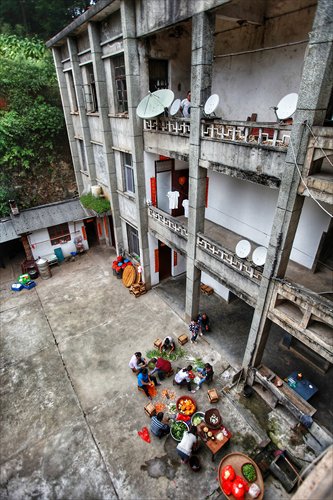
Villagers congregate in front of the old school building to help the couple with their wedding. Photo: CFP
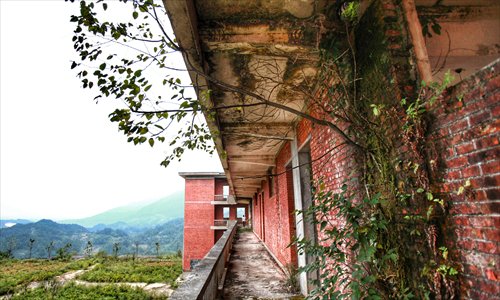
The building that was once the factory's school has been left to decay. Trees and grass grow all over the hallways. Photo: CFP
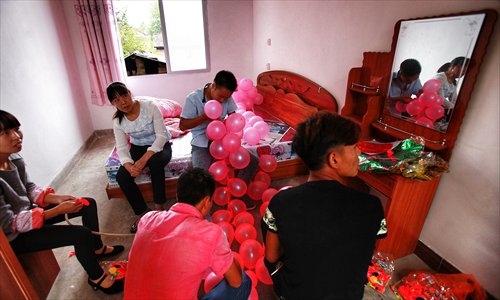
A couple from the local village get married in one of the old classrooms. Photo: CFP
"I'm finally back after 10 years. Even though it's a bit desolate, it'll always be my classroom, my home."
Somebody wrote this on a chalkboard in the old classroom of the Nanfeng mechanics factory in Hanzhong, Shaanxi Province. The factory was built in 1966 to manufacture air-to-air missiles and used to employ more than 10,000 people in more than 90 buildings.
From 1964 to the 1980s, the central government started a massive industrial development called the "Third Front Movement," as part of the planned economy. It included building foundries, power plants and factories that manufactured military and mining equipment. There was also a large investment in transportation, infrastructure and technology.
The movement involved 13 provinces in central and western China, as well as some parts of municipalities. The thousands of factories, research units and schools were later called the "backbone" of western China's economy. Nanfeng is one of these factories.
Liu Zhongmu, 73, said he worked for the factory when he was in his 20s. He said the factory was a community back then, with dormitories for all the workers and their families. There was a market for vegetables and other goods, a stadium, a hospital and a few clubs, all affiliated with the factory.
"The factory was here for 30 years, everybody was like family," he said.
Gradually, in the 1980s and 1990s, as China shifted towards a market economy, there was less need for these "third front" factories and many were split up into smaller businesses or closed down.
Nanfeng moved its operations to Luoyang, Henan Province and started making machines for civil uses, such as packaging machines or receipt printers.
The old Nanfeng factory was never demolished. Some of its old workers went to work at the new site, some went back to farming and most went out of town to find other jobs.
Over time, the Nanfeng factory buildings became dilapidated and some farmers used them to house their chickens and sheep. They now stand as memorials to this period of China's history.
Posted in: In-Depth